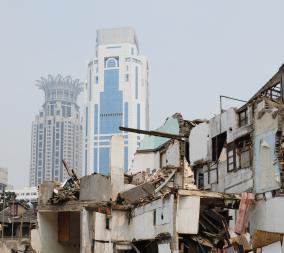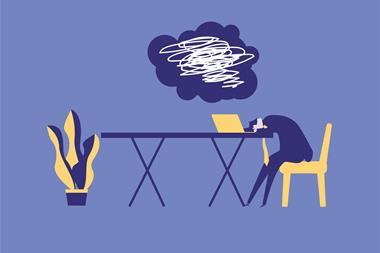Have you visited online auction house eBay recently? Did you see the counterfeit Mini Cooper for sale? This particular entry may have been a friendly hoax to grab your attention, but for risk managers and brand protection officers representing luxury brands, services or retail products, such entries only serve to highlight the amount of counterfeit and stolen goods being sold online. It is a real problem - and without any bidding, it could be yours.
What is the risk?
If counterfeit products purporting to be your own become available online, you could experience a devastating decrease in the demand for your genuine product. Goods are often misrepresented, and unsuspecting customers have no guarantee that the products they are buying are genuine and have not been interfered with.
The counterfeiting of trade-marked and copyrighted products is not a risk to be taken lightly. The consequences can include:
- financial support of criminal activity
- a significant threat to consumer health and safety
- fuelling global money-laundering
- eroding reputation and client loyalty from the rightful brand
- depriving legitimate businesses of revenue.
- significantly reducing national and international employment.
Buyers beware?
So do online consumers unknowingly commit offences under the Proceeds of Crime Act 2002? Maybe. It has never been easier to access the internet and browse for hours on specific online auction sites such as eBay.co.uk, auctions.amazon.com, or bid.com
The chances are that if you have visited such a site, you will probably have entered the search terms 'Rolex watch' or 'Prada handbag', just to see if you could pick up a bargain, an unwanted Christmas present, or shop-reduced goods. Most of the time you do get a genuine bargain. But, have you ever noticed the descriptive terms '100% Genuine' or '100% Authentic'?
From a cynical viewpoint and coming from an investigative background, these bid descriptions generally mean the opposite to me. Take a look at some of these descriptions:
- 'Great imitation Prada Handbag
- Looks just like the real thing! Hardly used, great condition'
- 'This watch is NOT a Rolex, just a very classy watch that I can only describe as looks like a Rolex'
- '100% genuine or your money back'
- 'I do not think this is a genuine rolex watch, it was brought as a present from abroad'.
Armchair terrorists click away
It is believed that eBay, for example, has 94.9 million users, 9 million of whom are registered in the UK. In any given day, there are millions of items across thousands of categories for sale on eBay. At any one time, eBay estimates there are 1 million items alone for sale from UK sellers.
Putting this into context and in terms of assessing the risk to your brand, reputation, market share, and overall loss of potential revenue, many organisations have a massive problem, especially as these goods can be sold at any time and anywhere.
Although many of these online auction sites have investigation teams, clearly, among these vast numbers of users, counterfeiters, criminal networks and fraudsters find it easy to avoid detection. So, ask yourself the question, is the money generated by online counterfeit sales funding criminal activities?
Research findings
Looking into this problem, my own organisation has found that the following are just a typical selection of our conversations with brand owners, brand protection officers, investigators and consumers:
- 'Why buy expensive branded goods when I can log on and get a copy at half the price?'
- 'I knew I had bought a copy, should have known better as it fell apart after I wore it a few times, lost confidence in the brand now.'
- 'I knew the risks involved, but the electronic toy I bought for my son was dangerous in terms of safety and that, all the wiring was wrong.'
- 'Counterfeit products are saturating the market and funding criminal networks. Our company does not want to be seen to be taking no action, but where do my brand managers start?'
- 'Counterfeit products being sold through the internet is damaging, as it ultimately compromises our quality standards and the expectations held by the end consumer.'
Most investigators and brand protection officers work hard during the week and deserve the weekends to themselves. However, did you realise that most illicit sales of counterfeit, stolen and grey market goods are placed on eBay at 6.30pm on a Friday night and illegally sold for a profit, before the brand protection officers come back to work at 9am Monday morning?
Technology versus technology
So how can technology play a part in combating illicit auction postings?
Key issues are:
- constant monitoring
- electronic intelligence and evidence gathering
- frequency analysis and interrogation
- automated legal action.
For example, my own organisation has developed an online interactive and investigative software tool which is specifically designed to protect your brand and corporate image. Appropriately named 'WatchDog', it has been designed to monitor any brand, at any time, on a variety of online auction sites. With client input and consultation, the resulting software automatically identifies potential counterfeit goods.
Every time a target brand is advertised for sale on specific auction and sales sites, WatchDog evidentially collects, caches and logs all of the information. It monitors the activities of the participants, the amount of brands and items for sale, and frequency of their sales. It also quantifies the costs and losses of the sales and ascertains who is purchasing the items. Round-the-clock monitoring of these e-retail sites automatically captures all users, patterns and trends relating to trade mark abuse and other intellectual property infringements - a task that would be difficult for most trained investigators, due to lack of resources and time. The technology automatically interrogates the brand listing descriptions, compares them to a number of similar items the seller has advertised, determines whether the seller is known to be a counterfeit trader and then grades the probability of the brand listing being counterfeit accordingly.
The legal procedure that follows once it is established that a product is counterfeit can also be automated. Through your legal department, the trade merchants and sellers concerned can be automatically contacted, warning them of possible trademark abuse and other intellectual property infringements and even sending 'cease and desist' notices to the offenders.
As well as providing proactive monitoring and response, tools like WatchDog can give you the opportunity to analyse historical data. Storing all the data, evidence and intelligence for an agreed period of time allows you to assess the performance of your brand protection programme. This reporting function will highlight trends to inform you of when and where your brand is most susceptible to unethical behaviour.
It is important to act
Product counterfeiting not only has an impact on our national economy, security and consumer health and safety, it also deprives legitimate owners of revenue, reputation and consumer loyalty.
Those involved in the sale of counterfeit products on these online sites may seem harmless enough. But when a counterfeit is sold on such a site, consumers have no way of knowing who originally manufactured the product, where their money eventually goes or what it supports.
Whatever investigative tools are provided to prevent such illegal activity, there will always be new ways in which markets will open up for opportunists.
To counter the threat, it is important to:
- increase the levels of customers' and brand owners' awareness and diligence
- raise the legal stakes against those selling counterfeit goods
- encourage enforcement agencies to prosecute the manufacturers, distributors, sellers and others involved in the trafficking of such goods
- protect the revenues of those companies that legitimately manufacture products.
- Neil Miller is a director at Commercial Security International Ltd (CSi), Tel: 020 7553 7960, E-mail: neil.miller@comsec-international.com
ANTI-COUNTERFEITING GROUP
Founded in 1980 by 18 companies with shared concerns about their brands being faked, the Anti-Counterfeiting Group (ACG) now represents the interests of over 200 companies in 30 different countries. Its brand owner members make clothing and car parts, toys, pharmaceuticals, food, drink, healthcare and beauty products, and even washing powder. All these products and more are now routinely counterfeited.
Through its specialist professional and brand protection group members, and with colleagues in the enforcement agencies, it provides an extensive range of contacts and advice on brand protection and enforcement matters, and important legal issues. It also offers international perspectives through networking with anti-counterfeiting organisations worldwide, and holds a national and international database of contacts and guidance on all relevant issues relating to the trade in fakes.
ACG works through media campaigns, roadshows and conferences to change society's perception of counterfeiting and to underline its damaging economic and social impact. It lobbies all levels of government, from local to international, for more enforcement resources and to bring in the necessary legislation to protect society from the increasing global threat of counterfeiting.
ACG says that counterfeiting is now being described as 'the crime of the 21st century'. On its website it highlights the risks.
- CONSUMER HEALTH AND SAFETY - The public is increasingly at risk from untested, poor quality fake goods of all kinds, including food and drink, products which we all buy in good faith every day. Fake children's toys and clothing are not safety-tested; counterfeit mobile phone and appliance batteries explode. A woman died in Scotland after drinking fake vodka.
- QUALITY AND GUARANTEES - The trust consumers have in a known manufacturer cannot apply to fakes, and they have no comeback when they fall apart (or worse).
- ECONOMIC IMPACT - There is an enormous cost worldwide in lost revenues, damage to legitimate businesses and effect on employment. In the UK alone, the estimated loss to the economy has doubled over the last five years. In 2003, it cost over 4000 jobs and nearly £10bn, on which the VAT alone would fund several new schools and hospitals.
- LINKS TO OTHER SERIOUS ORGANISED CRIME - Major criminals control much of the trade in fakes, using their existing smuggling and money-laundering networks to swamp the markets. Intelligence links their vast illegal profits to other organised crime, including terrorism.
www.a-cg.com


















